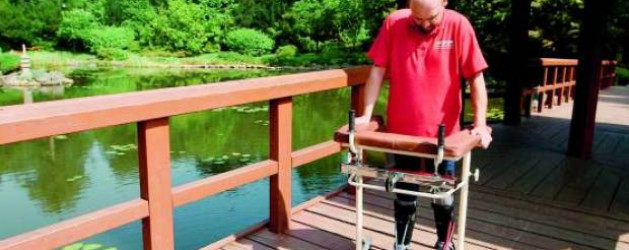The spinal cord regenerated with nasal cells was pioneered by Prof. Geoffrey Raisman, who first identified their potential to repair nerve damage in mice. The olfactory en-sheathing cell transplantation has been successfully used to enable Darek Fidyka, who was paralyzed from the chest down in a knife attack in 2010, to walk again.
The future for cell regeneration is extremely vast according to Professor Geoffrey Raisman, who began experimenting with mice in this field with his first transplant in 1972, over 40 years ago. In years to come, utilizing his team’s first successful human regenerative cell transplant, as an initial first step, we will see strides made in stroke, heart and brain damage patients. The horizon is vast for the improvement of humanities health and well being.
http://youtu.be/OMJLg5K40U0
The paper reporting the transplant, which was carried out by surgeons in Poland and led by Geoffrey Raisman of the UCL Institute of Neurology, is published today in the journal Cell Transplantation (5). The technique involves taking specialized cells known as olfactory ensheathing cells (OECs) from the patient’s own patient’s olfactory bulbs, and then grafting these cells at the site of injury, where they promote nerve cell growth to bridge the gap and restore function. An added advantage in using the patient’s own cells is that it avoids the problem of rejection by their immune system.

Darek Fidyka, 40, from Poland, said walking again – with the support of a frame – was “an incredible feeling”, adding: “When you can’t feel almost half your body, you are helpless, but when it starts coming back it’s like you were born again.”
Prof Geoffrey Raisman, chair of neural regeneration at University College London’s Institute of Neurology, led the UK research team. He said what had been achieved was “more impressive than man walking on the moon“.
The treatment used olfactory ensheathing cells (OECs) – specialist cells that form part of the sense of smell. OECs act as pathway cells that enable nerve fibres in the olfactory system to be continually renewed. In the first of two operations, surgeons removed one of the patient’s olfactory bulbs and grew the cells in culture.
Two weeks later they transplanted the OECs into the spinal cord, which had been cut through in the knife attack apart from a thin strip of scar tissue on the right. They had just a drop of material to work with – about 500,000 cells. About 100 micro-injections of OECs were made above and below the injury with four thin strips of nerve tissue were taken from the patient’s ankle and placed across an 8mm (0.3in) gap on the left side of the cord.
The scientists believe the OECs provided a pathway to enable fibres above and below the injury to reconnect, using the nerve grafts to bridge the gap in the cord.
BBC Interview by Fergus Walsh with UK research team

